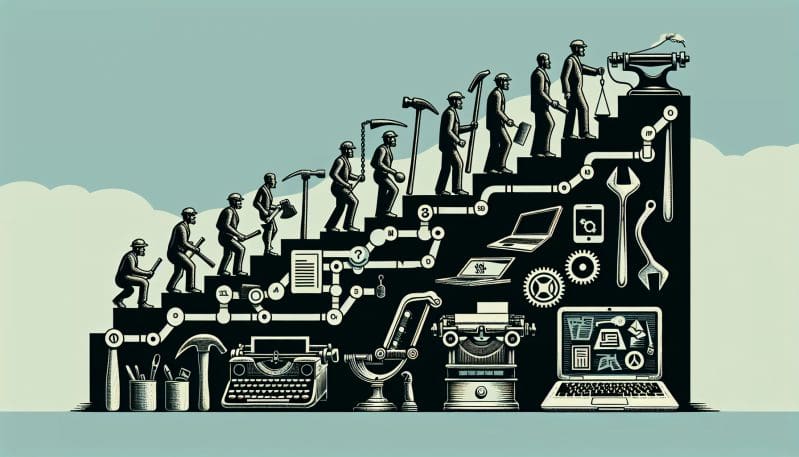The Evolution of Unionization in the Digital Era: Ensuring Fair Representation in the Modern Workplace
- Home
- The Evolution of Unionization in the Digital Era: Ensuring Fair Representation in the Modern Workplace
- Editors Desk
- January 24, 2024
- 0 Comments
In the face of relentless technological advancement, the modern workplace is undergoing a transformation unlike any before. As an Aging Workforce Specialist at No Worker Left Behind, my focus has been on the intersection of work, workers, and the workplace — and it has become increasingly apparent that the digital era poses both opportunities and challenges for unionization and collective bargaining.
The rise of remote work, the expansion of the gig economy, and the integration of artificial intelligence (AI) into daily work processes are reshaping what it means to be part of the workforce. Traditional models of unionization were built around a stable and predictable work environment — but that is not our reality anymore. The question now is: How can unions adapt to continue advocating effectively for workers’ rights in such an evolving landscape?
Innovative strategies are needed for unions to maintain relevance. Digital organizing tools provide one answer, enabling unions to reach out to and engage with members virtually. These tools can facilitate easier communication, especially among workers who may never share a physical workspace. Online platforms can also serve as gathering spaces for discussion, voting, and organizing actions.
Another strategy is for unions to form alliances with tech worker groups. By aligning themselves with individuals who are native to the digital landscape, traditional unions can learn new tactics and understand the unique challenges posed by tech-centric work environments.
Worker engagement is also evolving. Now more than ever, it’s essential that unions take into account the diverse needs and preferences of a multigenerational workforce. This may include flexible membership options, targeted communication strategies, and member-driven initiatives that harness the power of social media to further their cause.
Policy plays a crucial role in supporting modern unionization efforts. Lawmakers need to recognize the changing dynamics of work and create a legal framework that facilitates new forms of collective representation and bargaining. Policies that protect gig workers and ensure fair labor standards for remote work are particularly relevant in the digital age.
As unions adapt, they have the potential to be a key player in shaping a more equitable future of work. By leveraging new union models, they can contribute to economic stability, social justice, and the protection of workers’ rights in the face of technological disruption.
In conclusion, the digital era demands that we rethink and revitalize the role of unions. The evolution of unionization is not just about survival but about redefining representation in the workplace to better serve the modern worker. It is through innovation and adaption that unions will continue to be a formidable force for the well-being of workers in the rapidly changing world of work.
The dialogue on this topic is more important than ever. As we continue to embrace the digital transformation, let’s ensure that no worker is left behind and that the evolution of unionization reflects the needs and aspirations of the modern workforce.


Leave A Comment